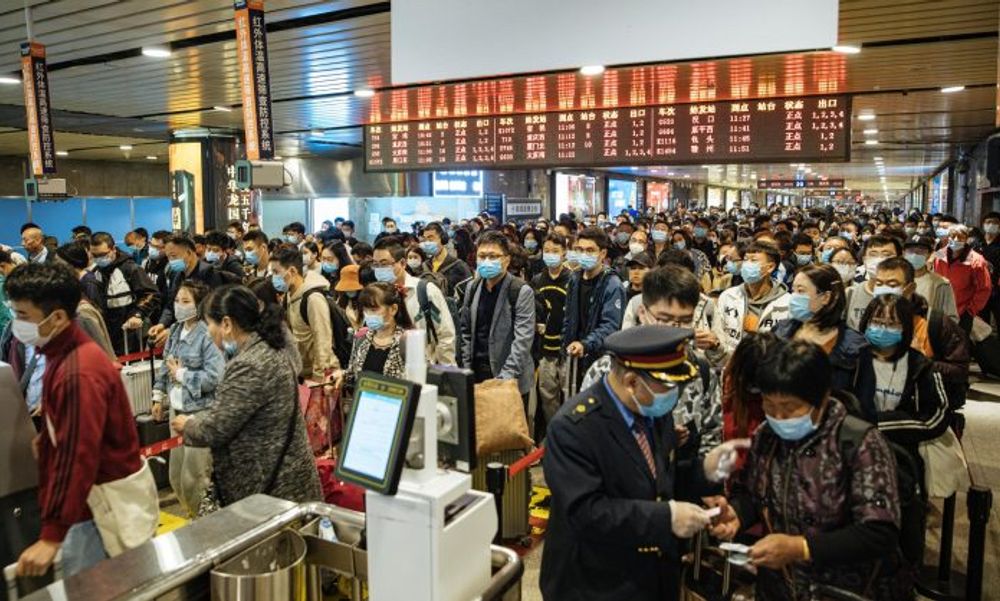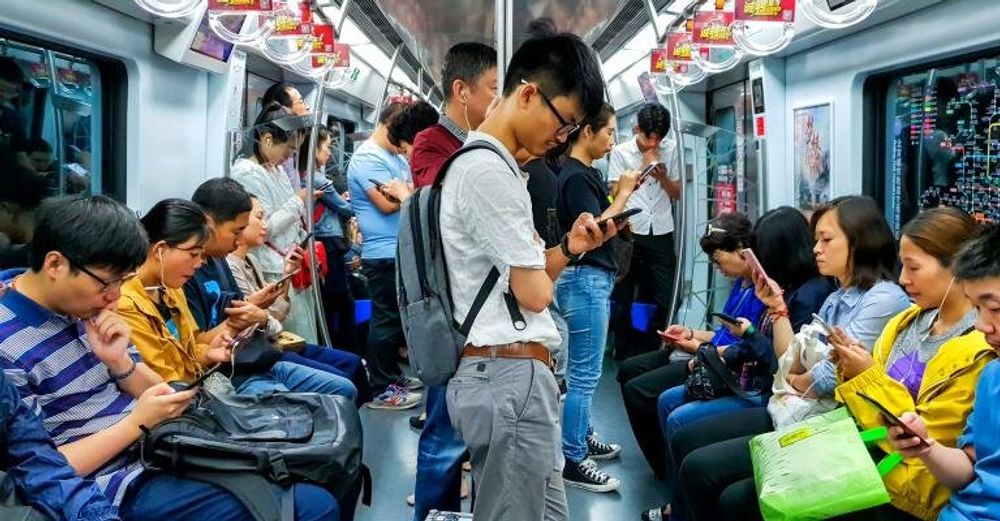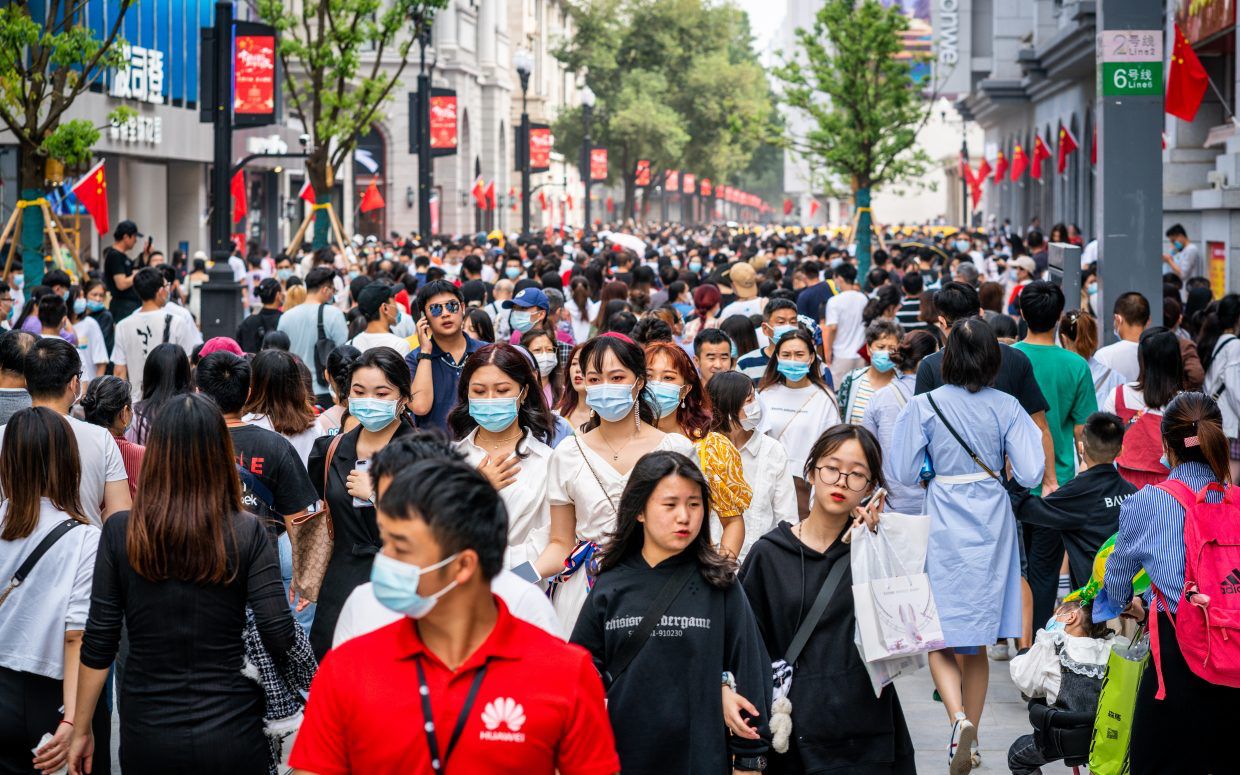Three Shanghai-based wine experts came together at Vinexpo Shanghai last month to discuss the impact Covid-19 has had on the country’s drinking habits and what it now means for producers so anxious to export their wines there.
Importing wine to China has never been a simple task. In a post-lockdown world it is no simpler. But with a wine market forecast to double in the next decade, it’s imperative any major wine producer understands how to do business there.
“There is no singular China wine market, and there is no singular wine consumer. There’s a lot of complexity here, there’s a lot of changes happening and there’s a big generational difference in consumers in China,” said Ian Ford, co-founder of Nimbility that specialises in helping wine companies operate most effectively in China.
Ford was speaking last month as part of Vinexpo Shanghai’s online series of debates and webinars as the trade show was forced to take the event online in face of Covid-19 restrictions.

Ian Ford of Nimbility, left, with Dan Seiners of Sarment, centre and Alexander Caillard of Pudao Wines took part in a Vinexpo Shanghai online debate
Ford was joined by Dan Seiners, global sales and marketing director ofSarment, the premium Chinese wine and spirits distributor, and Alexander Caillard, head of sales at Pudao Wines, for a webinar on the ‘shifts and restructuring of distribution channels in the Chinese wine market post Covid-19’.
While Covid-19 continues to drag so much of the rest of the international wine market down – particularly in the UK which has forced all of its on-trade to close again in England this month – the main takeaway from Shanghai was China is not slowing down. Even for Covid.
Imports of bottled wine into China have rocketed from 2.25m nine-litre cases in 2006 to 50.5m cases in 2019. Nimbility says that trend is not showing any signs of slowing despite a slight drop in actual imports over the past two years.
Particularly as this is a major global wine market with less than 1% per-capita consumption, it’s not surprising Ford still sees huge potential for growth. In fact, Nimbility predicts the market will double in size over the next decade based on 2018 import figures.
This means the 56.57m nine-litre cases imported into China in 2018 would increase to around 113.14m nine-litre cases by 2028. That’s a lot of wine.
Domestic boom
The spring lockdown is a thing of distant memory for Shanghai. If anything China has roared back to life thanks to the ban on international travel.

Ian Ford said Covid-19 has not knocked China’s overall growth trajectory for wine. He was speaking as part of the Vinexpo Shanghai distributor debate
“The Chinese dining occasion continues to be very fertile ground,” said Ford. “There is such a strong celebratory dining culture where wine fits perfectly. That’s not going away, that’s a very firm part of the business.”
While the potential for a Covid-resurgence this winter and economic distress are still a cause of concern, Ford added: “Overall there is a sense of cautious optimism and a cautious approach for the opportunity for the economy to be open.”
Seiners claimed Shanghai has been pretty much back to normal for the past two months. While the rest of China still lags behind, the on-trade market in Shanghai is consistently improving by 20-25% each month.
Although not all cities have loosened their Covid-19 measures to the extent of Shanghai, the Golden Week holiday from October 1-8 revealed the power and potential of those closed borders.
During the holiday week the Chinese travel network saw over 62 million passengers travelling each day. Resulting in a boom in sales across the hospitality sector. The total aggregate sales revenue for the restaurant, retail and hospitality sectors was up by 4.9% on the same period last year, whilst Union Pay, PayPal’s partner in China, saw total transaction value on the site up 6.3% on last year during the Golden Week holiday.
“With the borders closed we’ve definitely benefited from the fact that the wealthy people that can afford to travel overseas during their holidays and go shopping on the Champs-Élysées or spending their shopping money overseas this year have been spending it at home,” said Caillard.
“We’ve seen our average price per bottle increasing. We’ve been having to buy far more of our top wines. Particularly the highly-collectible ones, the big names like LaFlaive and DRC, which we just can’t get enough of.”

Closing its borders to international travel has not had too much effect on China thanks to the vast numbers of Chinese who have spent their holidays at home rather than travel overseas in 2020
How can importers capitalise on this?
The path is undeniably much easier for importers with “feet on the street” already in China.
Ford said Casillero del Diablo, Lafite and Penfolds are three of just a handful of brands that have ‘made it’ in the Chinese market. Ford puts their success down to real consumer interest and demand.
“Creating real consumer demand must be the single long-term goal,” he said. “There is no substitute in our view for a producer to create legitimate and sustainable consumer interest and demand for the brand. Opportunistic trading and shifting containers are not the way to build the market.”
For importers looking to break in tothe market it can be trickier.
Some distributors have gone down the route of using influencers to help build their brands to tap into markets they don’t yet have access to, but this often comes at a huge cost.

Everyone’s on their phones in China, all the time, which has made its influencer market highly important – but costly
Caillard explains: “I think these wanghong or KOLs (key opinion leaders) that have an existing following, and an existing viewership, have really been able to capitalise on this, and many wine companies have been using these people as a sales tool for their products – at great costs. Said hen there’s others which have been trying to use their own platforms, more often or not with little success because they haven’t been able to garner the following that these KOLs have.”
Caillard said they recently had a woman live streaming from Pudau Wines who they realised had 35,000 viewers watching her live. All she was doing was drinking a glass of wine, but she was drinking that wine in Shanghai – that was the hook. For those outside of the city she is a window into an aspirational Shanghai lifestyle.
When you have access to the market the next thing is to ensure your marketing shoe fits.
Content is King for Ford. In China the digital space is very dynamic and it’s vital any marketing or communications created for European or American audiences must be carefully repurposed for the Chinese market, and not simply be a window into what you’re doing in another market, he stressed.
China’s changing drinking habits
To look forward we must, first, cast our eyes back to April for a second.
Lockdown saw a surge in at-home wine consumption across China and demand for direct-delivery suppliers, but the panel was split on whether this was a trend that would continue in the long term.

The online wine market in China still has enormous potential and has been given a big boost by Covid-19
Caillard saw at-home consumption increase, but price spent per bottle decreased during lockdown, due to a lack of need for the “glitz and face” gained from a bottle of top Bordeaux when drinking with close family.
“Speaking to customers they said ‘I’m just drinking at home with my wife I don’t need the show, I don’t need the glitz and the face that I get from bringing a great bottle of Burgundy or Bordeaux.’”
He added: “I don’t think that at-home consumption is really a major growth point for the wine industry in China, particularly premium wine.”
Covid-19 has certainly increased the pace at which everything is now taking place online in China and companies are having to get ever more creative to stand out and be seen and heard. For Seiber, the lockdown period served more as a period of technology education on online shopping opportunities.
“We sold out of most of our top wines the top month. The drinkers did die down, but the collectors were just bored and went shopping. Those same collectors, probably in that boredom, started looking around and having the time and boredom to find new places to get wine,” he explained.
Livestreaming is an element of the Chinese ecommerce space that is very diverse, and allows viewers to make in-video purchases. It has been available in China for a while but has come into its own in recent months.
Caillard said the level of professional livestreaming has increased dramatically in China, but “more often than not it’s just people with an I-Phone set up and talking for three hours straight”.
So with the proliferation of everyday technology, have we seen the end of the in-person tasting in China? Not according to Ford: “My strong feeling is that it will [come back] but not fully replace this new tool that we have.” Caillard agreed: “I just don’t think video will ever replace in person, this is a business where people appreciate human contact.”
Future for imported wine

Alexander Caillard said one of the biggest issues for distributors and retailers in China is knowing how much wine you need to be ordering as the market is so hard to predict due to Covid-19
“The biggest difference between before Covid and now – particularly as we head from autumn and into winter and the fear of potentially a resurgence – is we’ve cut back inventory,” is how Caillard sees the coming months.
This does not mean, however, a cut-back on SKUs. Just a safety net for working capital in case of another lockdown.
The situation is similar at Sarment. Seiners said it was particularly hard to order at the moment as it’s so hard to forecast. “We all know how tough it is in normal times, but now we don’t know which data to look at – I can’t really look back at past completions to know what I need to order for the next six months. I’m tempted to use the previous six months of the same period of 2019, but that’s optimistic, that’s presuming there’s no second wave,” he said.
For him it’s about more being optimistic on the key items, choosing your battles and making decisions on what to focus on. “Obviously with a lot of private sales that’s kind of easy,” he added. “Private people don’t mind when something goes out of stock, but for our on-trade business, which is quite large, we need to really keep our clients in stock.”
“I could sit with algorithms all day long but out of stocks will be increased over the next six months from all wine suppliers as we all are conservatively ordering and we’re not going to hit the mark. It’s always normal that some things will occasionally go out of stock for a couple of weeks, but I think that rate will triple across all importers for the next period.”
But it’s not all doom and gloom. Seiners said it was also “the best time by far to be building or rebuilding a portfolio”. “Never in my life,” he added, “has it been this easy to get in touch with wineries that normally would never bother answering an email. Now, iconic wineries where I was not even able to try their wines before, within 24 hours can offer an allocation. They’re just ready to go.”
“For an importer and distributor of boutique wines like ourselves, this is also the best time to be reaching those iconic, always-selling-out, allocation, wineries.”
- You can watch the full debate between Ford, Seiners and Caillard at Vinexpo Shanghai by registering and clicking here.
- You can still catch up on the full webinar series as part of the new online Vinexposium Connect service from Vinexposium here. It includes presentations on the China market from IWSR as well as debates on Chilean, Austrian and Bordeaux wine in China amongst others.









































